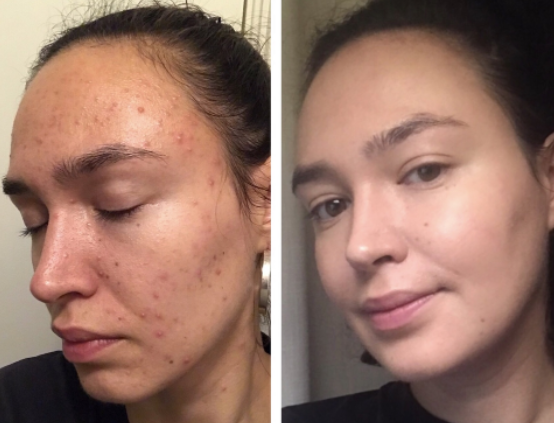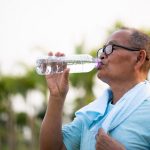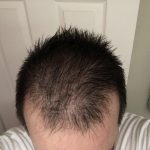How Long Does Spironolactone Take To Work For Acne?

Acne is a skin condition that occurs when your hair follicles become plugged with oil and dead skin cells. It causes whiteheads, blackheads, or pimples. Acne is most common among teenagers, though it affects people of all ages. In fact, research estimates that 9.4 percent of people worldwide have acne. In the United States, acne is the most common skin condition, according to the American Academy of Dermatology (AAD).
While acne doesn’t pose a serious risk to your overall health, it can still be painful, particularly if you have severe acne. Over time, acne might also cause scarring. There’s no denying that acne can contribute to emotional distress. Acne and acne scars on your face and other visible body locations can affect self-esteem and self-confidence, and they can even contribute to feelings of anxiety or depression.
Acne signs vary depending on the severity of your condition:
• Whiteheads (closed plugged pores)
• Blackheads (open plugged pores)
• Small red, tender bumps (papules)
• Pimples (pustules), which are papules with pus at their tips
• Large, solid, painful lumps under the skin (nodules)
• Painful, pus-filled lumps under the skin (cystic lesions)
Acne usually appears on the face, forehead, chest, upper back, and shoulders.
What is Spironolactone?
Spironolactone is a medication used to treat certain patients with hyperaldosteronism (the body produces too much aldosterone, a naturally occurring hormone); low potassium levels; heart failure; and in patients with edema (fluid retention) caused by various conditions, including liver, or kidney disease. It is also used alone or with other medications to treat high blood pressure.
Spironolactone is used off-label in the treatment of hirsutism, female pattern hair loss, and adult acne vulgaris. Spironolactone is also frequently used for its antiandrogenic effects in transgender female patients due to its low cost and reducing male-pattern hair growth.
How spironolactone works
This drug belongs to a class of drugs called aldosterone antagonists (blockers), or potassium-sparing diuretics. A class of drugs is a group of medications that work in a similar way. These drugs are often used to treat similar conditions.
This drug works by blocking aldosterone activity. Aldosterone is a chemical made by the body that can cause water retention. This makes certain heart, kidney, and liver conditions worse. By blocking aldosterone, your body won’t retain fluid. This process also stops potassium from being excreted by your body. This drug may lower your blood pressure by blocking aldosterone’s effect on your blood vessels.
How does spironolactone help with acne?
Spironolactone slows down your body’s production of androgen hormones, such as testosterone. These hormones can make the skin produce too much oil, which clogs pores and causes acne.
While androgen hormones promote masculine characteristics, everyone — even women — needs a certain amount of androgens for normal body functions. But lowering the hormones down from an excessive amount can help with acne.
How Long Does Spironolactone Take To Work For Acne
A dose of spironolactone starts working immediately and reaches peak plasma levels within 7 hours, and activity persists for at least 24 hours. Spironolactone decreases acne breakouts and oiliness in a few weeks, but your response to the medication may be different. Studies have also found the medication to be very effective and people tend to get more benefits from the medication the longer they take it.
Dermatologists have been prescribing spironolactone for many years to treat acne and excess hair growth in women. When other acne treatments don’t work, it can effectively treat deep-seated, tender acne on the lower face, jawline, or neck.
However, spironolactone is not prescribed to treat acne in men due to side effects. Men have developed breasts while taking this medication to treat acne. Spironolactone is generally considered safe for healthy women.
Spironolactone dosage for acne
Spironolactone is a tablet that you take by mouth, once daily. Doses for acne typically range from 25 mg to 200 mg. Your provider will determine what is the best dose for you depending on your situation.
Remember, acne is considered an off-label use of spironolactone. So a standard dose for treating acne hasn’t been determined by the FDA.
You can take spironolactone with or without food. But make sure you pick one way and stick to it. Also, avoid taking it before bedtime since it can make you go to the bathroom.
Your provider may recommend that you combine spironolactone with other acne treatments, such as oral birth control pills, so they can work together to fight your acne. In turn, the combination can give you better results than either treatment on its own.
How long do you stay on spironolactone for acne?
You and your provider will need to decide how long you should take spironolactone. While it can take several weeks to get the full benefit, you might be on it for a longer or shorter period of time depending on your response to the medication.
What are the side effects of spironolactone?
Spironolactone may cause side effects. Tell your doctor if any of these symptoms are severe or do not go away:
• deepening of voice
• diarrhea
• difficulty maintaining or achieving an erection
• drowsiness
• enlarged or painful breasts in men or women
• increased hair growth on parts of the body
• irregular menstrual periods
• restlessness
• stomach pain or cramps
• tiredness
• vaginal bleeding in post-menopausal (‘after the change of life’, the end of monthly menstrual periods) women
• vomiting
Some side effects can be serious. If you experience any of these symptoms, call your doctor immediately:
• blood in stools
• changes in heartbeat
• confusion
• decreased urination
• difficulty breathing or swallowing
• dry mouth, thirst, dizziness, unsteadiness, headache, or other signs of dehydration
• extreme tiredness
• fainting
• flu-like symptoms
• hives
• inability to move arms or legs
• itching
• lack of energy
• loss of appetite
• muscle weakness, pain, or cramps
• nausea
• pain in the upper right part of the stomach
• pain, burning, numbness, or tingling in the hands or feet
• rash
• unusual bleeding or bruising
• vomiting blood
• yellowing of the skin or eyes
If you experience a serious side effect, you or your doctor may send a report to the Food and Drug Administration’s (FDA) MedWatch Adverse Event Reporting program online (http://www.fda.gov/Safety/MedWatch) or by phone (1-800-332-1088).





